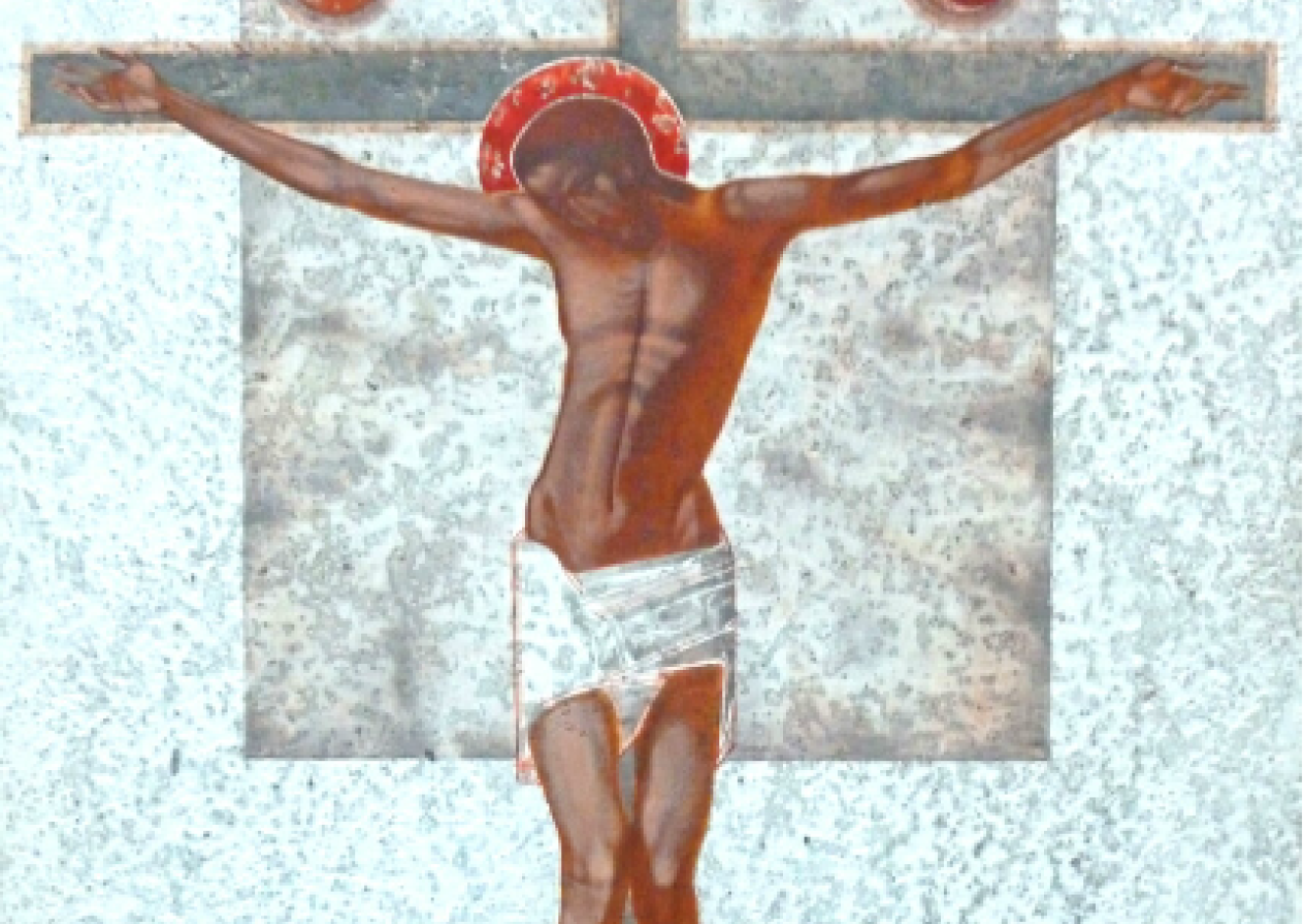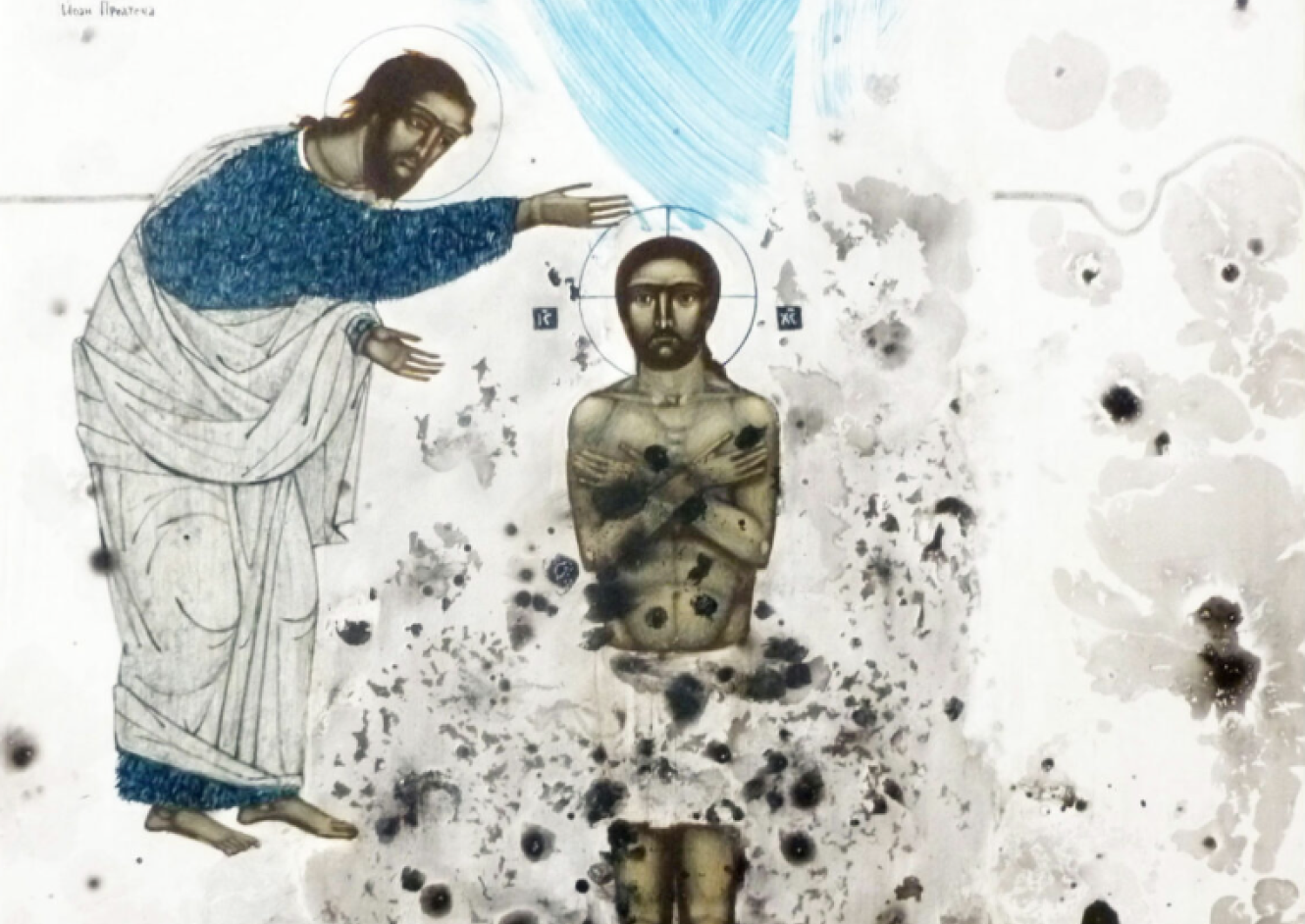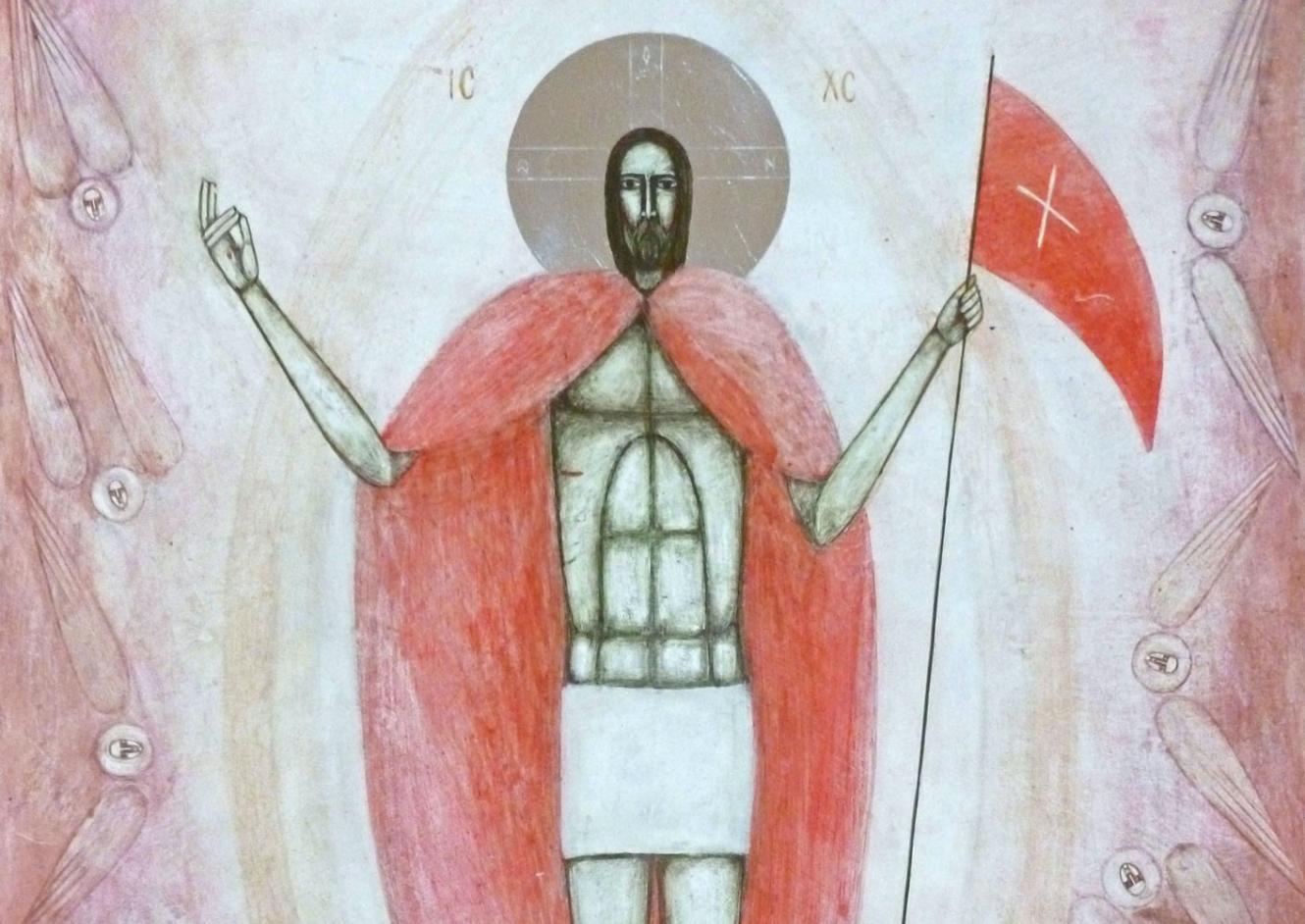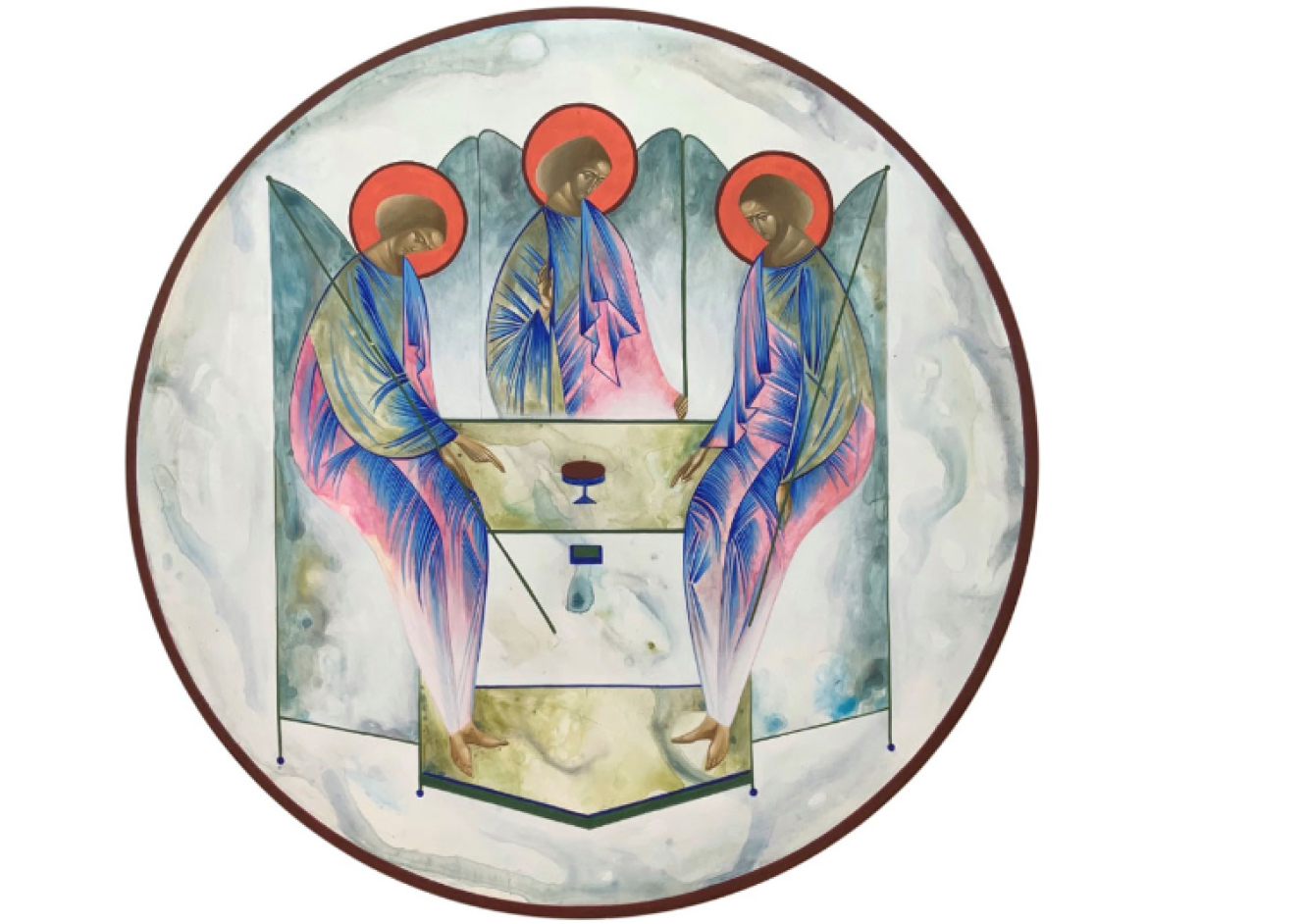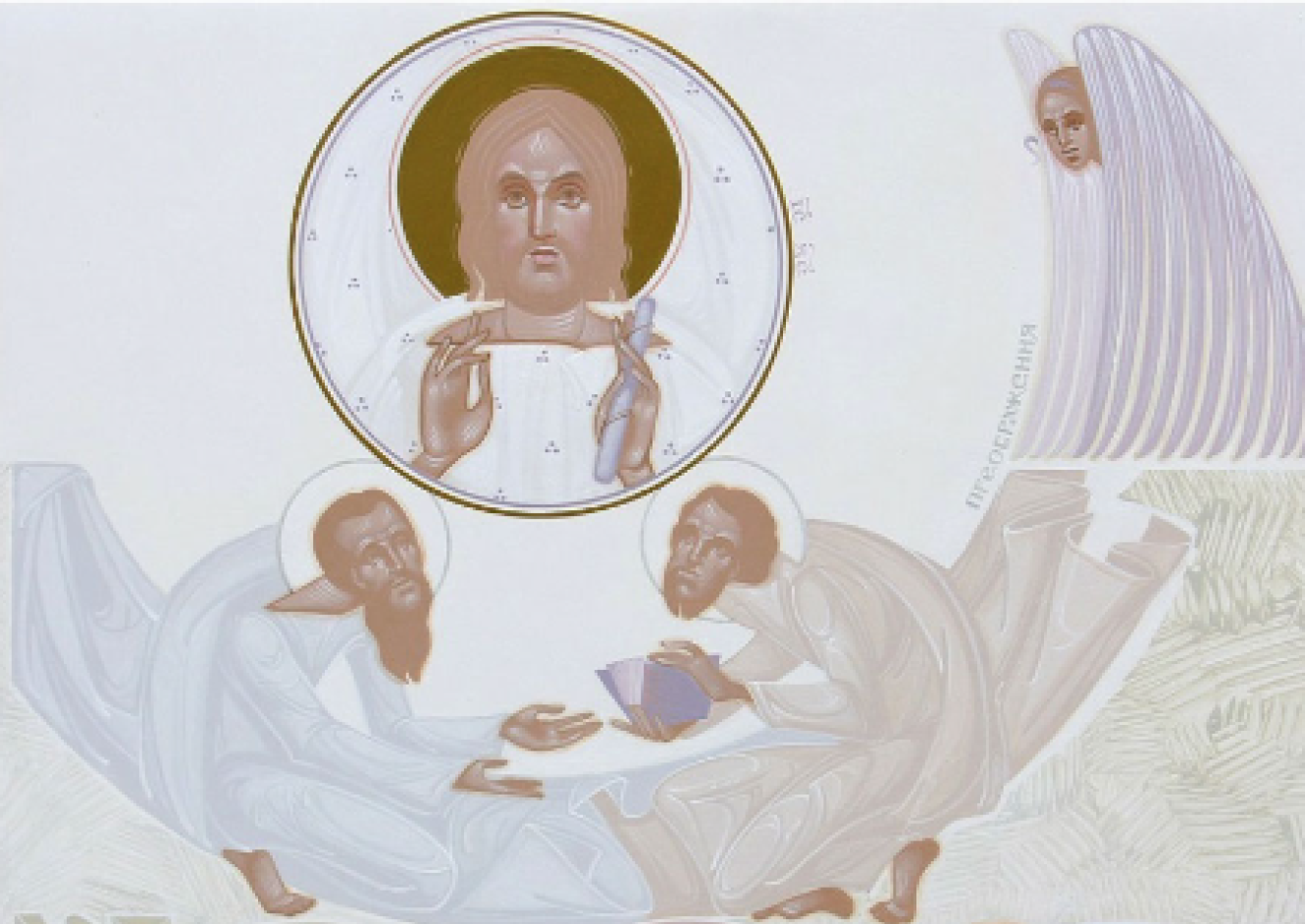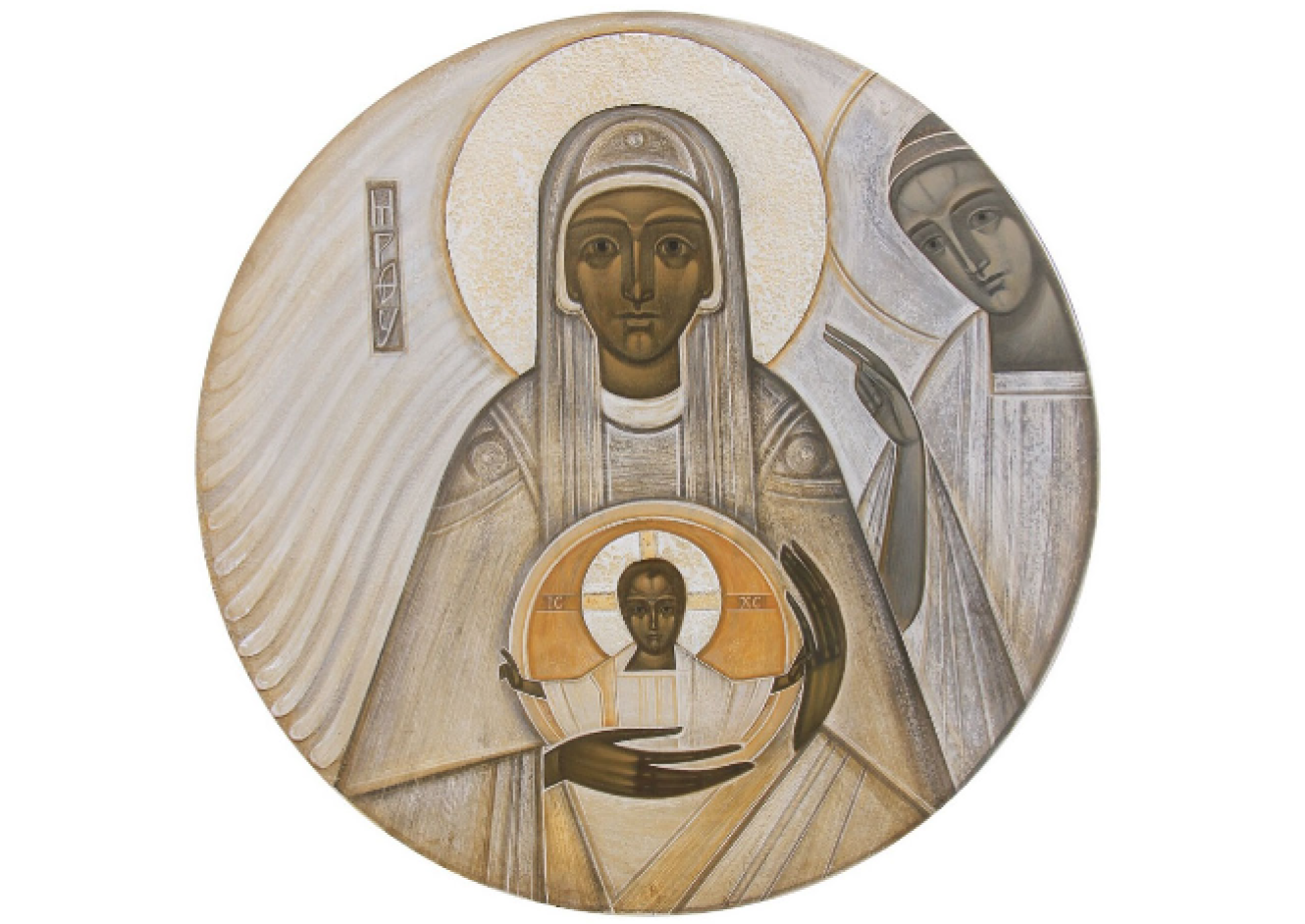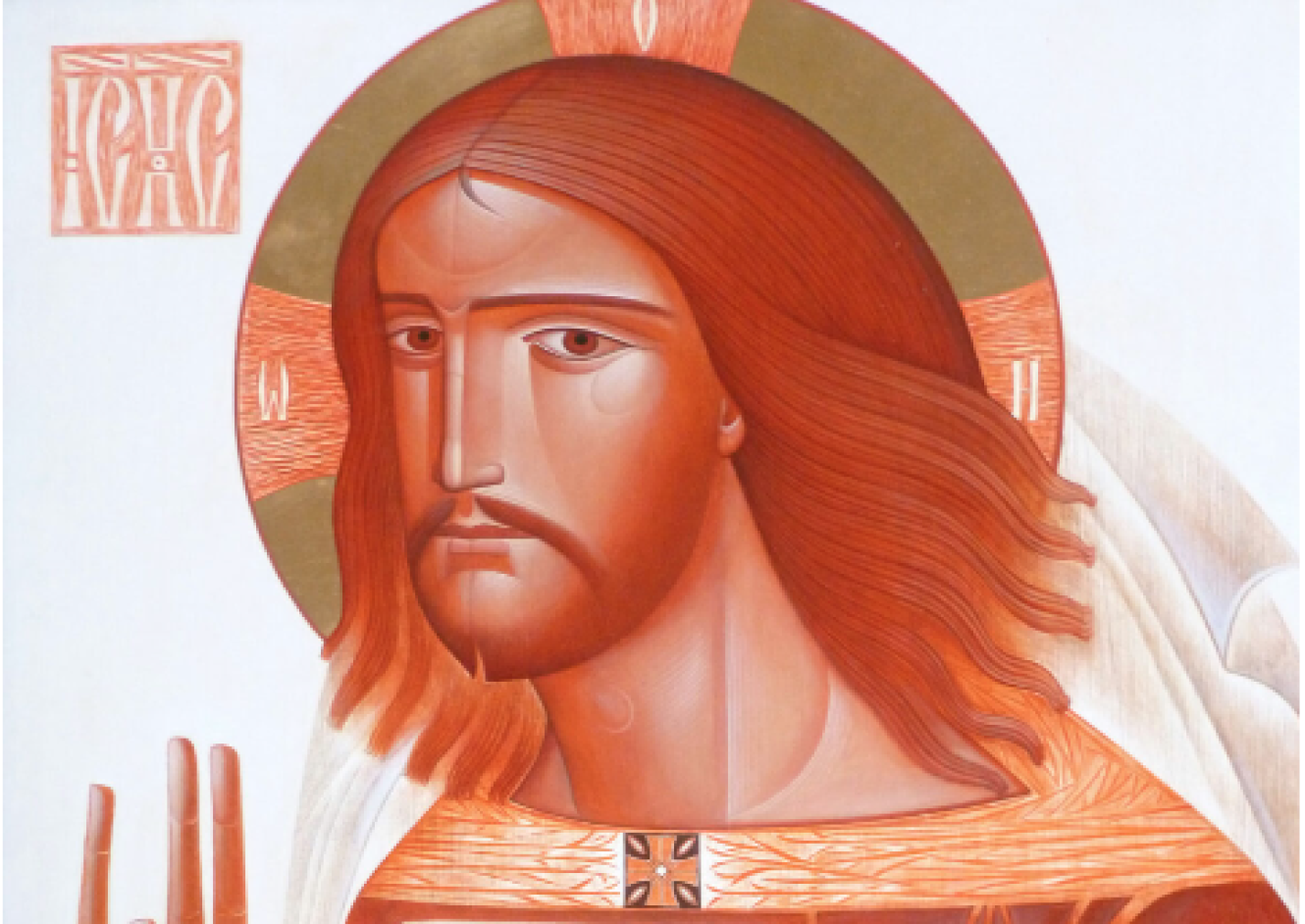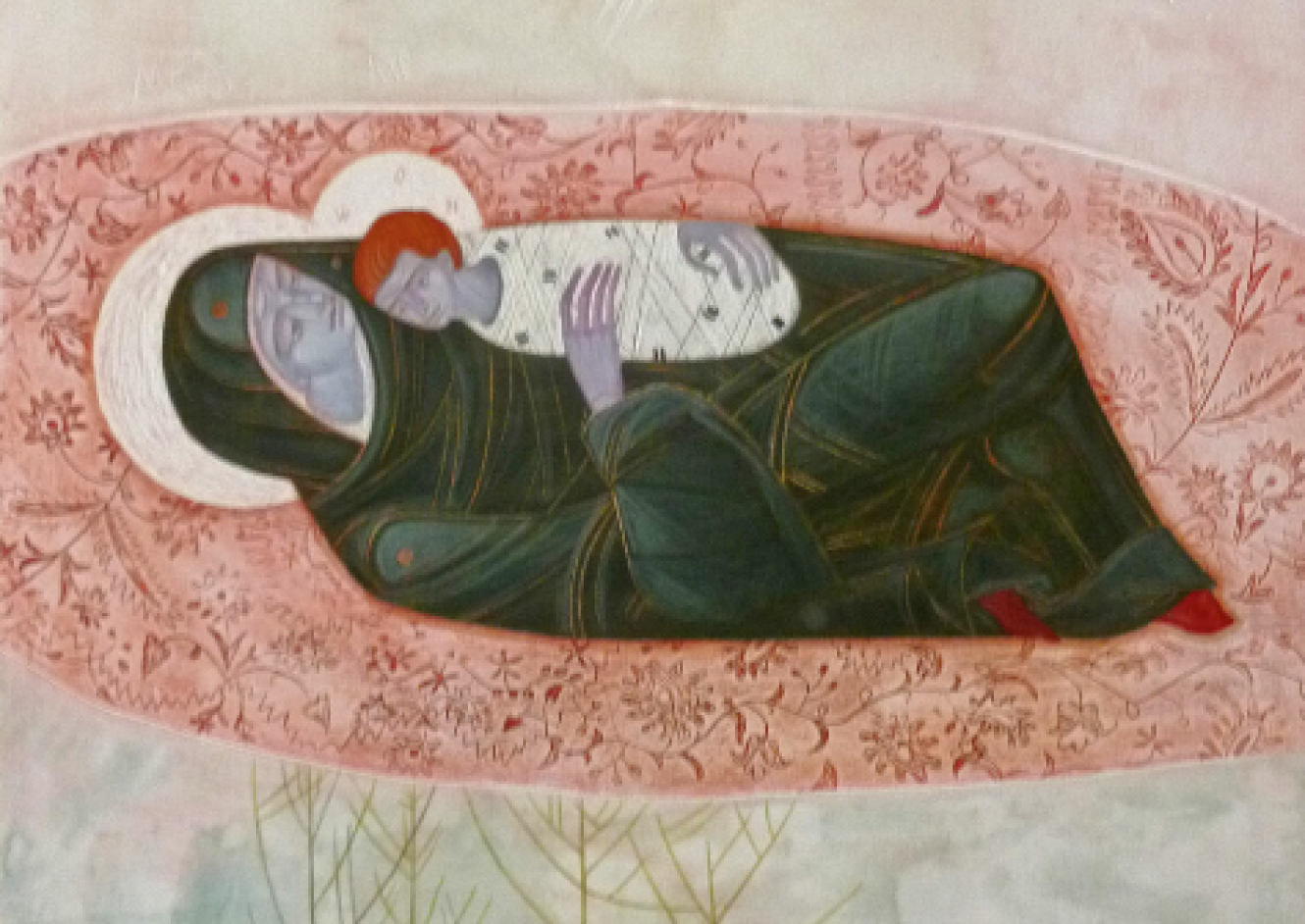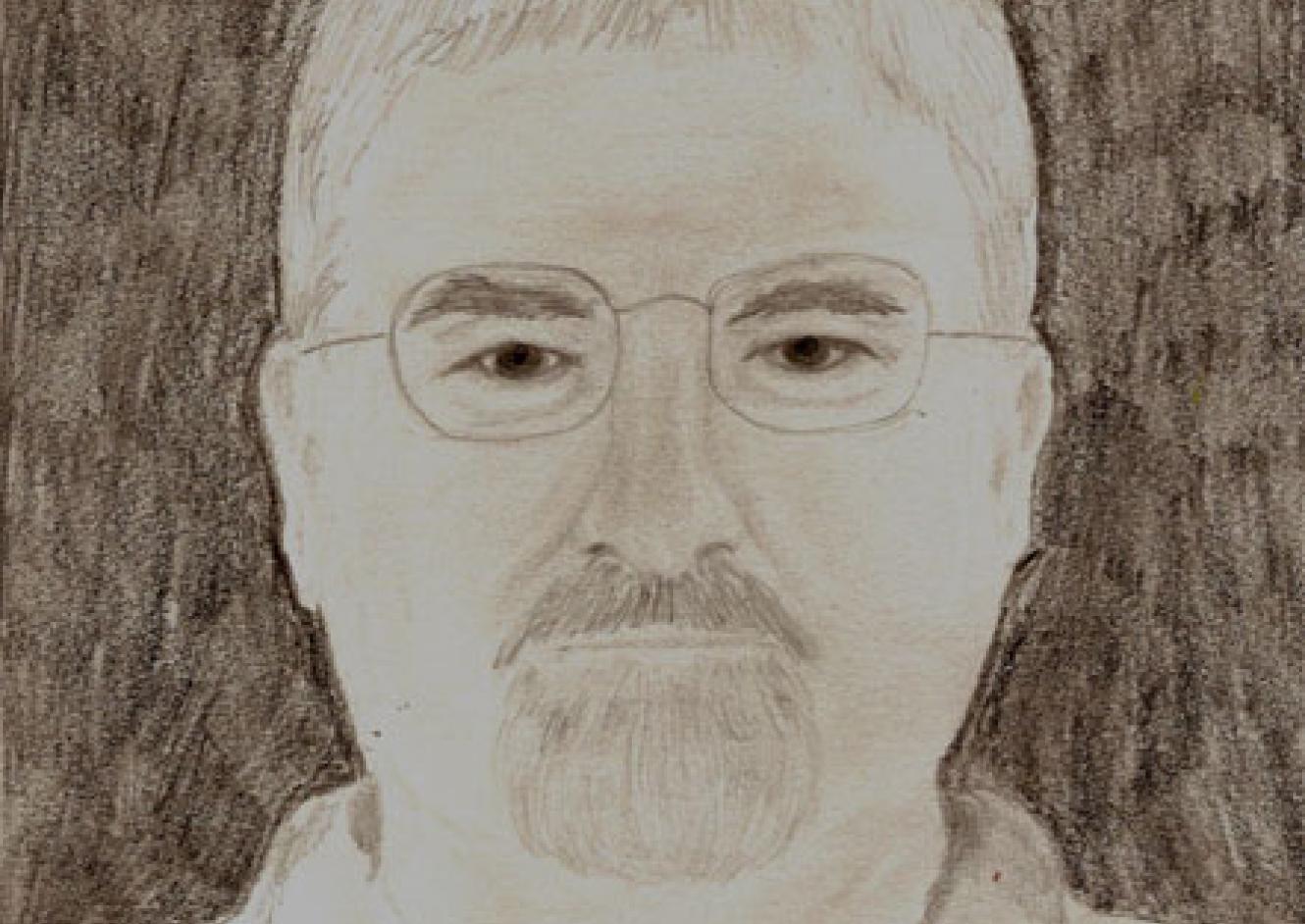The Campolo Center of Eastern University and Palmer Theological Seminary and College was delighted to host East Meets West, a visual art exhibit that paid tribute to eight innovative women icon makers of Ukraine, a land where the Latin and Byzantine worlds collide and converge. Those eight artists, students of a new school of iconography in the West Ukrainian cultural center of Lviv, achieved recognition in a religious art genre traditionally dominated by men. Respectful of the theological and artistic canons of iconography, they experimented with different mediums, unusual painting techniques, and color palettes to create contemporary variations on time-honored themes.
Learn More
Explore more information about the exhibit


